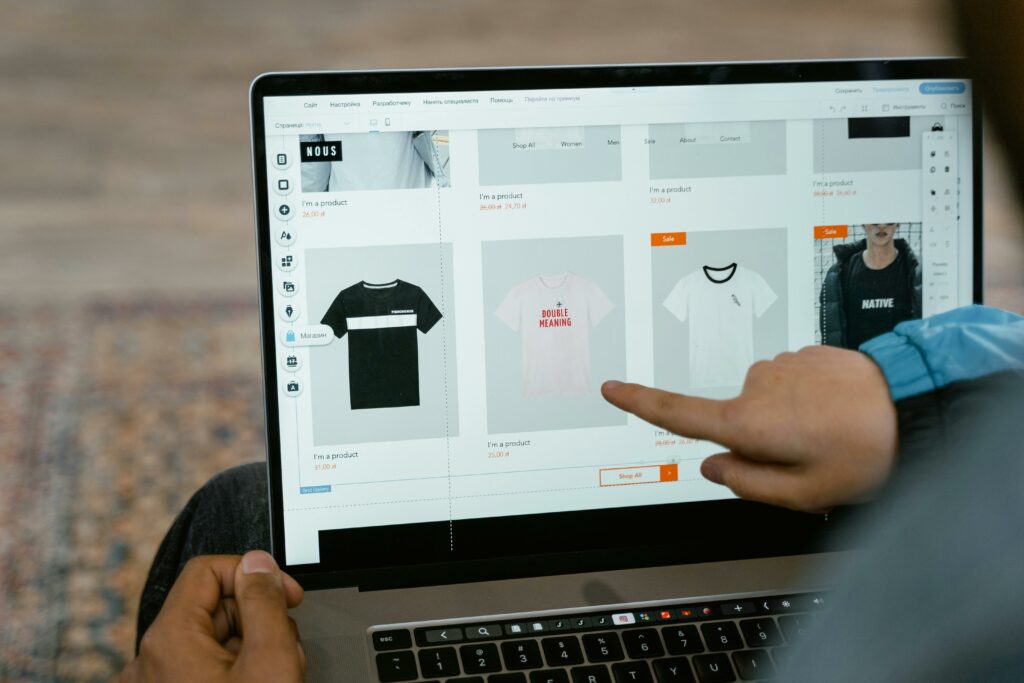Merchandising is an integral part of any eCommerce business. Having a merchandising strategy that attracts and engages customers, whilst boosting sales and brand loyalty is key. This post will take you through four main elements of merchandising in 2024 that can help bring these benefits to your store.
What Is Ecommerce Merchandising?
eCommerce merchandising in 2024 is the method in which you promote, bury and hide products in order to drive sales. Just like merchandising in shop fronts, eCommerce merchandising should help you put your best foot forward, as it were. It will help you to meet your business goals whether they are:
- Boost sales of a specific product
- Remove old inventory
- Push to change brand direction
- Simply make the highest profit
Whatever your business goals are, there is a merchandising strategy that can suit your needs. When done well, at the same time as boosting your business goals you will increase customer satisfaction.
4 Elements Of Your Merchandising Strategy
In order for your merchandising strategy to be effective, there are certain things you should consider. The strategy should not be overcomplicated. It should be simple to use, to engage with and the buying funnel should be apparent and easy to follow.
These four main elements of merchandising in 2024 should be considered, let’s look at them now:
- Brand Identity
- Layout
- Product Grouping
- Recommendations
Brand Identity
Having a strong brand identity is an integral part of your eCommerce business. Your merchandising strategy should definitely bear this in mind. In many ways, merchandising is the visual identity of your brand, so for this reason it’s important that it makes sense with the products and values your brand is associated with.
Merchandising should be consistent over different channels such as: browser, app, mobile site, social media, email and SMS marketing, and any other methods of communication. Ways to achieve this is through elements such as:
- Brand logo
- Font
- Image style
- Color palette
- Positioning
- Language style and tone
These should all work cohesively together in a way that represents an overall vision. When customers access any of your outreach points, they should know that it’s you they are dealing with. This should complement the products you offer and increase sales.
When done well, branding will let people know that you share the same values as them and make them want to purchase from you. Particularly for Gen Z and millennials who care about the ethics of a brand before they purchase, this is important to have down.

Layout
The user experience (UX) and user interface (UI) should both be simple and appealing. Customers should want to purchase from you based on the aesthetic, look and feel of your online store. At the same time, it should be easy to use and clear how to make purchases. The buying journey should be clearly defined.
These two elements make up the visual elements of your homepage, landing pages and product pages. The way they look should also be paired with the usability. Both should be considered in order to keep customers happy.
Some things you can include to help achieve this are:
- Interesting and engaging high quality images
- Optimized search bar ideally powered by an AI solution
- Intuitive navigation
Product Grouping
Curation, or product grouping, is the practice of grouping together products that have common attributes. Not to be confused with bundling, which groups items together in order to sell them as a whole- grouping is a way of pairing similar products that shoppers will be interested to view together.
This kind of curation can be done in different ways. Products can be grouped based on similar attributes such as:
- Material
- Collection
- Function
This can help the customer journey flow seamlessly from one thing they are interested in to the next. For example, merchandising works if all dresses are grouped together, all shoes are grouped together, and all accessories are grouped together. If these were all visible in one page it would distract attention and make it harder and more confusing for shoppers to complete their purchases.
The more detailed your grouping becomes, the more this can help the customers. Obviously it shouldn’t be too narrow of a category, however clever curation can set apart your merchandising from the others. It can prove what kind of a shop you are, and how well you know your products and your clients.
Personalized Recommendations
Offering your shoppers personalized recommendations is an important part of eCommerce merchandising. AI technology can help your shoppers find what they are looking for, highlighting your business as intuitive and cutting-edge, whilst boosting sales.
Based on their search history, click profile and (if they have an account with you) previous purchases, you can offer recommendations relevant to them. The online shoppers data can be utilized to let them know you value their custom.
When done well, these recommendations are a win-win. Your customer finds what they are looking for, and you boost sales. These recommendations can be sent via email and SMS marketing, as well as on check-out or even product pages. They can have a great positive impact on your business, and are not a part of merchandising in 2024 to be overlooked.
Conclusion
If you follow these four elements, your merchandising strategy will already be off to a great start. These are the bare essentials for keeping customers happy and keeping your sales up. In 2024 all eCommerce stores use merchandising, and it would be a waste for yours to get left behind.
